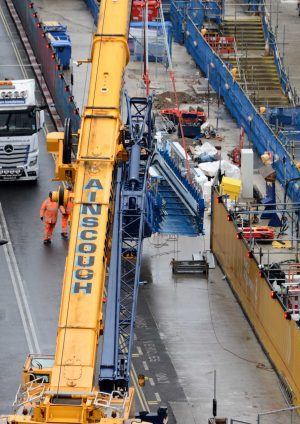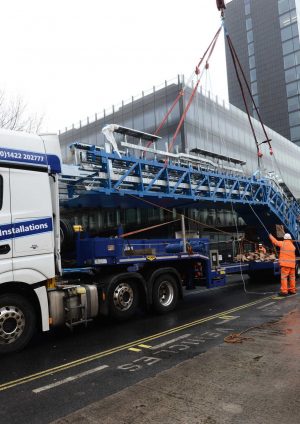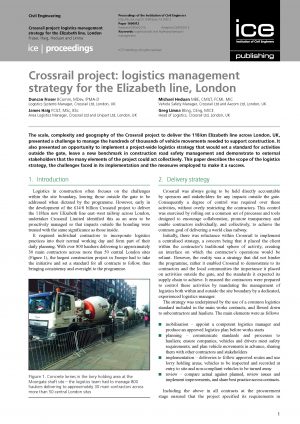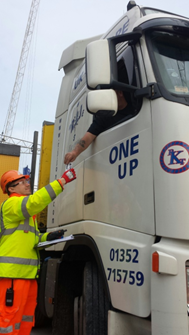Crossrail identified logistics early on as a key priority and that it should be proactively managed such that the impacts outside the hoarding were treated with the same significance as those inside, requiring individual contractors to incorporate logistics practices into their normal working day.
As part of obtaining the Crossrail Act 2008 Crossrail had committed to minimising road transportation, ensuring beneficial re-use of uncontaminated excavated material, maximising use of sustainable transport, coordinating all vehicle movements, undertaking lorry driver training and promoting off-site manufacture. All of this was therefore detailed in the Works Information (Part 26). This part of the Works Information describes the Crossrail’s logistics management requirements and the logistical constraints on how the Contractor Provides the Works arising from the commitments made by the Crossrail. As well as the detailed Works Information Crossrail developed a Logistics Management plan specifically for the central section delivery area as it was understood that delivery of these central section stations would require sensitive and efficient handling. The learning legacy paper on Logistics provides an overview of the principles of Crossrail’s logistics strategy and how it was implemented, identifying the key challenges, lessons learned and how it continues to influence other projects and stakeholders.
Logistics in construction often focuses on the challenges within the site boundary, leaving those outside the gate to be addressed when dictated by the programme. But early in the project’s development Crossrail identified this as an area which it wanted to be proactively managed so that impacts outside the hoarding were treated with the same significance as those inside. With 800 hauliers delivering to 30 main contractors across 47 central London sites the largest construction project in Europe Crossrail decided to take the initiative and try and set a standard for all contracts to follow.
The overall HGV data is detailed in the forthcoming HGV dataset demonstrating just how much HGV movement took place to/from sites throughout the project from 2012 to 2017.
Due to the size and complexity of the project Crossrail also worked with the relevant local authorities to define specific lorry routes. These can also be accessed in the dataset paper.
To demonstrate how this movement was minimised and controlled a logistics micro report has been developed using Paddington Station as an example site. It provides a summary of the site construction, the HGV movement logged, how that movement is linked to the construction timeline.





